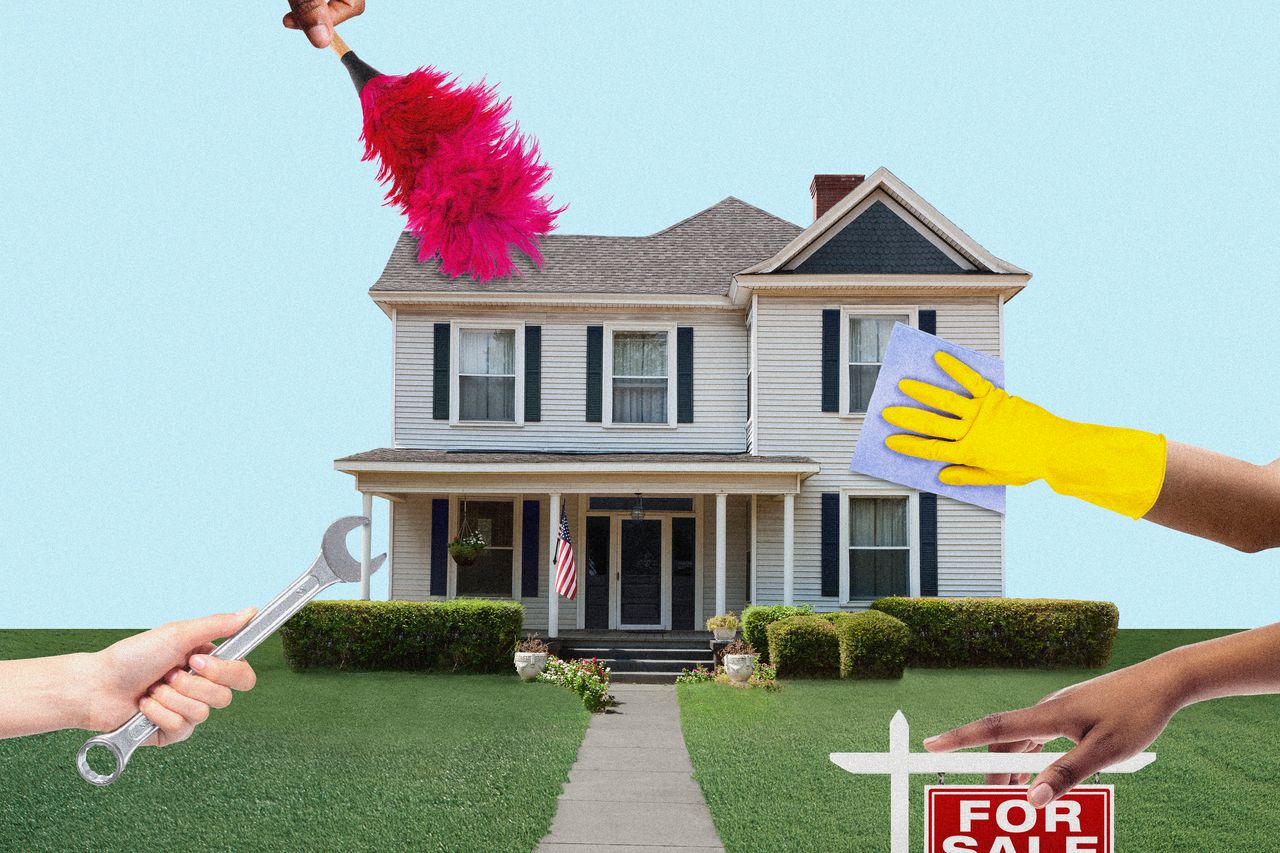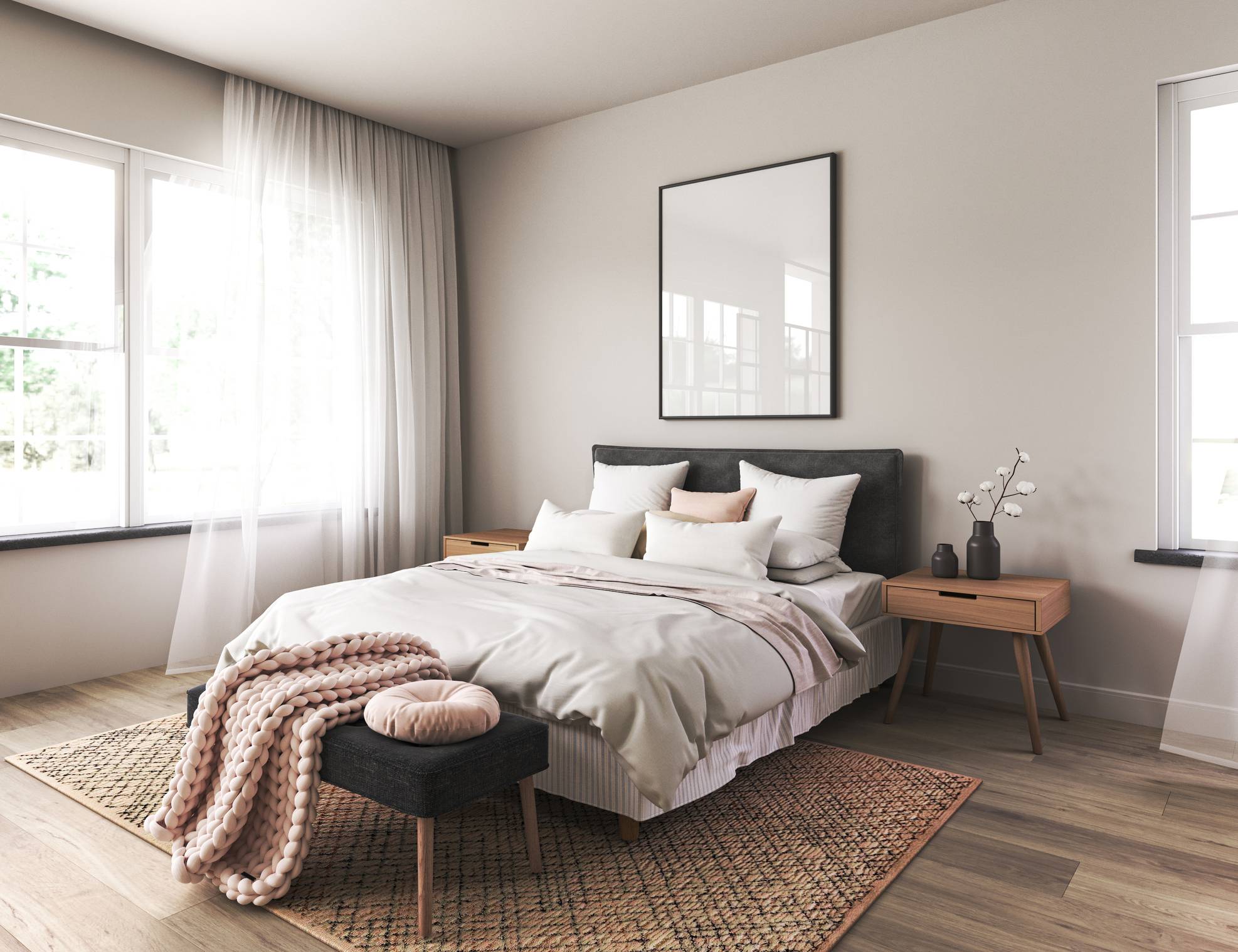The Repairs That Will Help Sell Your House in a Cooling Market
More sellers are remodelling properties to avoid cutting prices, though some projects pay off more than others
The playbook for selling a home needs a makeover, and often so do the houses.
Selling a house takes much more elbow grease than it did a year ago. Homeowners earlier could expect a bidding war the moment they staked the for-sale sign in the front yard, even if the property was in dire need of updating.
With mortgage rates now pushing 7%, buyers are harder to come by and easier to turn off, real-estate agents say. Making repairs or even small cosmetic improvements that buyers care about could make the difference between getting your asking price or giving a discount.
Between mid-July and mid-August, about 95% of home sellers made updates or repairs before listing their properties, up from 71% of sellers six to 12 months ago, according to Realtor.com. They spent an average of $14,163.
Not all renovations are worth the cost for sellers, data suggest. The top three interior remodelling projects with the highest return on investment are a hardwood-flooring refinish, new wood flooring and an insulation upgrade, according to a recent National Association of Realtors report.
Some sellers might find that smaller fixes such as a fresh paint job can make a bigger impression on buyers than pricier changes such as a renovated third bathroom, real-estate agents said.
“Sometimes, the upgrades that aren’t the sexiest pay off the most,” said Judy Dutton, executive editor at Realtor.com.
A big remodelling project, such as a new kitchen or deck, might not be worth the investment and delay a seller’s timeline, given supply and labor shortages, said Jessica Lautz, a vice president at NAR. Focus on more affordable projects that appeal to buyers and look beautiful in photos, such as refinishing hardwood floors, she said.
A hardwood-flooring refinish has a 147% cost recovery, meaning homeowners are likely to recoup well more than the cost, said Ms. Lautz. For comparison, a kitchen upgrade has a 67% cost recovery.
Consider the smaller things that are likely to turn buyers off and fix them fast. Mitigating strong odours is a relatively low-cost fix that helps sell a home, said Mark Barnes, a Realtor in Charleston, S.C.
Mr. Barnes got one client’s home a deep cleaning before showing it to potential buyers, because the scent of the owner’s dog overpowered the house.
The owner paid about $400 for the service, which included two carpet cleanings. The house sold for $475,000, about 5% over the list price, Mr. Barnes said. A deep cleaning could add $3,731 to the sale of a home, according to a recent report by HomeLight, a marketplace that connects home sellers with real-estate agents.
Enhancing curb appeal helps a home stand out to buyers and reduces seller concessions, said Darin Eppich, a Realtor in Los Angeles.
Mr. Eppich recommended his client David Garonzik resod the front lawn of a three-bedroom Woodland Hills, Calif., home as an improvement from the lawn that was dying from the drought. Mr. Garonzik considered putting in a desert landscape with rocks, but Mr. Eppich didn’t think the roughly $10,000 cost would be worth it or would seem as appealing to buyers.
Mr. Garonzik is hoping the $4,000 improvement will help him land more than the home’s $1 million asking price, though it is too soon to know whether the gambit worked.
For apartment sellers, focus on cosmetic upgrades—unless there is an apparent flaw such as a leaky faucet or nonworking appliances, said Renée Lee, a real-estate agent in New York City.
Anything that isn’t broken, is costly to replace and isn’t overtly visible, such as a new central air-conditioning system, won’t impress buyers as much as improvements they can see, such as new doors for the kitchen cabinets or customisable closet shelves, she said. Aim to fix anything that an inspection would turn up, real-estate agents said.
Rising material costs are one reason to be judicious with the projects you choose. Utility is another.
Cindy Scholz said one of her clients wasted more than $1,000 repainting his home’s garage floor and re-wallpapering the inside of closets.
“Don’t fixate on items that don’t matter,” said Ms. Scholz, a Realtor in East Hampton, N.Y.
 Copyright 2020, Dow Jones & Company, Inc. All Rights Reserved Worldwide. LEARN MORE
Copyright 2020, Dow Jones & Company, Inc. All Rights Reserved Worldwide. LEARN MORE
This stylish family home combines a classic palette and finishes with a flexible floorplan
Just 55 minutes from Sydney, make this your creative getaway located in the majestic Hawkesbury region.
This may be contributing to continually rising weekly rents
There has been a substantial increase in the number of Australians earning high incomes who are renting their homes instead of owning them, and this may be another element contributing to higher market demand and continually rising rents, according to new research.
The portion of households with an annual income of $140,000 per year (in 2021 dollars), went from 8 percent of the private rental market in 1996 to 24 percent in 2021, according to research by the Australian Housing and Urban Research Institute (AHURI). The AHURI study highlights that longer-term declines in the rate of home ownership in Australia are likely the cause of this trend.
The biggest challenge this creates is the flow-on effect on lower-income households because they may face stronger competition for a limited supply of rental stock, and they also have less capacity to cope with rising rents that look likely to keep going up due to the entrenched undersupply.
The 2024 ANZ CoreLogic Housing Affordability Report notes that weekly rents have been rising strongly since the pandemic and are currently re-accelerating. “Nationally, annual rent growth has lifted from a recent low of 8.1 percent year-on-year in October 2023, to 8.6 percent year-on-year in March 2024,” according to the report. “The re-acceleration was particularly evident in house rents, where annual growth bottomed out at 6.8 percent in the year to September, and rose to 8.4 percent in the year to March 2024.”
Rents are also rising in markets that have experienced recent declines. “In Hobart, rent values saw a downturn of -6 percent between March and October 2023. Since bottoming out in October, rents have now moved 5 percent higher to the end of March, and are just 1 percent off the record highs in March 2023. The Canberra rental market was the only other capital city to see a decline in rents in recent years, where rent values fell -3.8 percent between June 2022 and September 2023. Since then, Canberra rents have risen 3.5 percent, and are 1 percent from the record high.”
The Productivity Commission’s review of the National Housing and Homelessness Agreement points out that high-income earners also have more capacity to relocate to cheaper markets when rents rise, which creates more competition for lower-income households competing for homes in those same areas.
ANZ CoreLogic notes that rents in lower-cost markets have risen the most in recent years, so much so that the portion of earnings that lower-income households have to dedicate to rent has reached a record high 54.3 percent. For middle-income households, it’s 32.2 percent and for high-income households, it’s just 22.9 percent. ‘Housing stress’ has long been defined as requiring more than 30 percent of income to put a roof over your head.
While some high-income households may aspire to own their own homes, rising property values have made that a difficult and long process given the years it takes to save a deposit. ANZ CoreLogic data shows it now takes a median 10.1 years in the capital cities and 9.9 years in regional areas to save a 20 percent deposit to buy a property.
It also takes 48.3 percent of income in the cities and 47.1 percent in the regions to cover mortgage repayments at today’s home loan interest rates, which is far greater than the portion of income required to service rents at a median 30.4 percent in cities and 33.3 percent in the regions.
This stylish family home combines a classic palette and finishes with a flexible floorplan
Just 55 minutes from Sydney, make this your creative getaway located in the majestic Hawkesbury region.






















